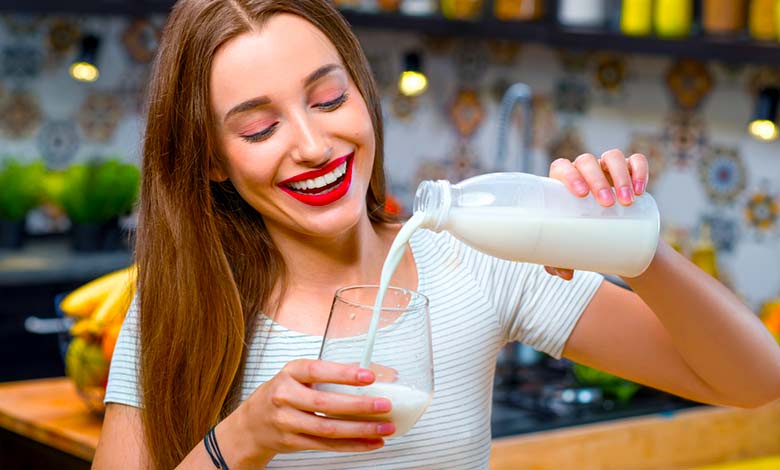
White milk gives all the calcium, protein, potassium, vitamin D, and other essential vitamins and minerals needed to grow. It’s not only humans; all mammals drink milk their moms produce. Research shows that when it comes to drinking formula milk or going the all-natural route.
It’s much better to go with mother nature on this one. Some studies show that babies who forego formula will be better educated and make more money when they grow up. But the thing is to digest the sugar lactose found in milk properly.
According to a US Department of Agriculture study, the average person ingests about 18 gallons of milk annually. That may seem like a lot, but this number is down from years past. Humans developed a genetic mutation that allowed them to process lactose well into adulthood since milk is a healthy source of protein and vitamins.
Many now lactose-tolerant people could live longer, healthier lives. In comparison, others who retained the intolerance would succumb to starvation due to a lack of healthy food options. So those who could pass on their genes to their offspring kept passing on this mutated gene.
Why is the milk white?
Milk appears white due to its composition and interaction with light. Here’s an explanation of why milk has a white color:
Scattering of Light: Milk is an opaque liquid with tiny particles suspended in a translucent medium. These particles, primarily proteins, and fat globules, are of sizes comparable to the wavelengths of visible light. When light passes through milk, it encounters these particles and undergoes scattering. The scattering of light by the particles occurs in all directions, resulting in a diffuse reflection of light. This scattering of light by the particles contributes to the milk’s white appearance.
Tyndall Effect: The scattering of light in milk is also responsible for the Tyndall effect, named after the physicist John Tyndall. The Tyndall effect is the phenomenon where light is scattered more strongly by particles similar in size to the wavelength of light.
In milk, the proteins and fat globules are comparable in size to the wavelengths of visible light, leading to significant scattering. This scattering of shorter wavelengths (such as blue and violet) is more pronounced than longer wavelengths (such as red and orange). As a result, milk appears white or slightly bluish when light is transmitted through it.
Absorption of Light: While milk mainly scatters light, it also absorbs a small amount of light. Light absorption occurs due to the presence of pigments, such as beta-carotene, in the fat globules of milk. However, the absorption is relatively weak compared to the scattering, and the overall effect is the dominant scattering of light that gives milk its white color.
The color white contains all the colors of the rainbow. Color occurs when an object or substance absorbs light. If something is red, the specific wave of light being absorbed is in the red area of the light spectrum. Something black absorbs all the light that is hitting it. It brings us to why something is white. This happens because none of the light is being absorbed. It is all reflected in the eyes, and then we see white. So what about milk?
- Milk comprises about 87% water, 5% lactose, and 8% vitamins, minerals, fats, and proteins. One protein, in particular, is called casein. This protein reflects the light that it comes in contact with. There are a few other fats in milk that also reflect light. That’s what gives milk its white color.
Scientific explanation: The word “light” applies to anything on the EM spectrum. The Sun emits all the colors in the visible spectrum. The leaf looks green because that’s the color the leaf reflects. Objects do not have color, but the light has color. Objects absorb some colors and reflect others. If something looks white, it reflects all the colors, but that can happen with transparent things. Eventually, most of the light gets reflected instead of passing through.
The inside back of the eye is covered in photoreceptor cells, which means “light receiver.” It’s nice when a scientific name makes sense. Those photoreceptor cells come in two types: rods and cones, literally describing their shape. The rods only detect the intensity of light.
So they do not help with color vision. The cones are where the magic happens, like colors. At the top of each cone is a stack of membranous containing tiny collections of iodopsin protein. It stimulates another protein called transducin. This enzyme degrades a secondary messenger chemical in the cone’s cytoplasm.
Light hits the cones, and a chemical signal sends signals to the brain. That signal contains information about the color because there are three different cones: red, green, and blue. They’re not that color. Most things in the human body are roughly the same pinkish-brown color. These cones are called red, green, and blue cones because that’s the type of light they each respond to.
The same is true for every other color on the visible spectrum. There are signal combinations the brain can receive that aren’t created by any single wavelength of light. What if the blue and red cones activate intensely at the same time? None of the colors on the visible spectrum are going to do that. If your brain gets that signal, it’s got to make sense of it somehow.
The brain makes up a color for a hypothetical signal combination, and that’s not the only color it makes up! What if all three types of cones activate intensely at the same time? Well, that’s what your brain calls white. That’s why the milk appears white.
More Articles:
